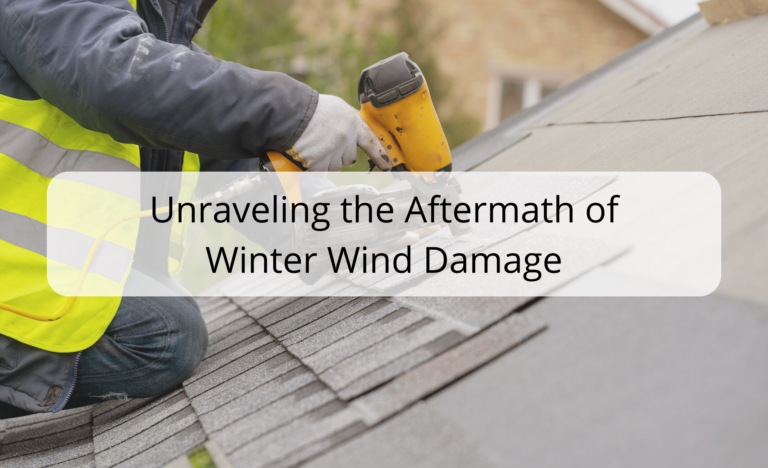In the face of natural forces, gusting wind can bring more than just a metaphorical shift; it has the real potential to cause tangible damage to our properties, especially during the winter months when the gusts can reach significant intensity. This blog post will delve into the practical aspects of wind damage, discussing common manifestations, preventive measures, and the crucial role that public adjusters play in navigating the aftermath.
Understanding Wind Damage
As the howling winds of a storm gather strength, the vulnerability of our homes becomes palpable. Understanding the specific threats posed by windstorms is essential in fortifying our properties against potential damages.
Roofing Woes: Windstorms are notorious for wreaking havoc on a property’s roofing system. The relentless force can mercilessly tear shingles away, leaving the structure exposed to the invasive threat of water infiltration. Moreover, high winds have the capability to lift and displace roofing materials, compromising the integrity of the entire roof. Timely inspections and repairs are imperative to safeguard against these potential roofing nightmares.
Flying Debris: Wind becomes an accomplice to destruction when it transforms seemingly harmless objects into projectiles during a storm. These projectiles can cause extensive damage to windows, siding, and other external structures. The impact varies from minor cracks to the alarming potential of complete structural failure. Reinforcing windows with storm shutters and securing loose items around the property are crucial precautions.
Fallen Trees and Limbs: Among the most ominous threats during a windstorm is the peril of trees and limbs crashing onto properties. The aftermath is not limited to structural damage but extends to the grave risks it poses to occupants. Proactive measures include regular tree maintenance, removing dead branches, and assessing the potential hazards of nearby trees.
Impact on Insulation: The forceful winds of a storm do not merely wreak havoc on the exterior; they can compromise the insulation of a property. This compromise allows conditioned air to escape, rendering heating or cooling systems less efficient. The result is increased energy costs and reduced comfort levels for occupants. Ensuring proper insulation and addressing any vulnerabilities promptly are essential steps in mitigating this aspect of windstorm damage.
By comprehensively understanding these threats, property owners can take proactive steps to fortify their homes against the destructive forces of windstorms.
Preventing Wind Damage
Conducting routine property inspections and maintenance is crucial in preventing wind damage. Regularly check that the roofing system is intact, addressing any missing or damaged shingles promptly. Secure loose items in the yard, such as patio furniture or garden tools, to prevent them from becoming projectiles during strong winds. Additionally, trim overhanging tree branches to minimize potential risks, especially those close to the house.
Strengthening vulnerable areas of the property enhances its ability to withstand strong winter winds. Consider installing storm shutters to protect windows and doors. Opt for impact-resistant windows that can withstand flying debris. Reinforce garage doors to prevent them from buckling under wind pressure. These measures significantly contribute to bolstering a property’s resilience against the forces of nature.
Thoughtful landscaping can act as a natural barrier against strong winds. Strategically plant windbreaks, such as sturdy shrubs and trees, to help reduce wind speed and protect the property. However, it’s crucial to choose the right species suitable for the local climate and maintain them regularly to prevent potential hazards during storms. Proper landscaping not only enhances the aesthetic appeal of the property but also adds an additional layer of defense against wind damage.
The Crucial Role of Public Adjusters
When the relentless forces of wind wreak havoc on your property, a swift and informed response becomes paramount. This is where the invaluable role of public adjusters comes into play. From immediate assessments to navigating the intricate landscape of insurance claims, public adjusters offer expertise and advocacy that can make all the difference in the aftermath of wind damage.
Navigating Insurance Claims: Understanding insurance policies and the claims process can be a complex task for property owners. Public adjusters serve as advocates, bridging the gap between policyholders and insurance companies. They possess the knowledge to interpret policy language, ensuring that all applicable damages are considered in the claims process.
Maximizing Compensation: Public adjusters leverage their negotiation skills to maximize compensation for policyholders. By presenting a well-documented and comprehensive claim, they enhance the likelihood of a fair settlement. Their expertise allows them to identify and quantify damages more accurately, ensuring that property owners receive the compensation they deserve.
Overcoming Insurance Company Challenges: Insurance companies may pose challenges during the claims process, such as disputes over coverage limitations or delays in processing. Public adjusters are well-equipped to handle these challenges, providing a buffer between property owners and insurers and advocating for a fair resolution.
Temporary Measures and Restoration Guidance: In the immediate aftermath of wind damage, public adjusters guide property owners on taking temporary measures to prevent further deterioration. They work alongside reputable contractors, facilitating the restoration process and ensuring that repairs are conducted efficiently and in compliance with insurance requirements.
Choosing the Right Public Adjuster
When selecting a public adjuster, consider their credentials and experience. Look for professionals who are licensed and have a proven track record of successfully handling wind damage claims. Experience in your specific geographical area is also valuable, as it ensures familiarity with regional insurance regulations and common weather-related challenges.
Requesting references from past clients can provide valuable insights into a public adjuster’s reliability and effectiveness. A reputable adjuster should be willing to share success stories and testimonials from satisfied clients.
Public adjusters typically charge a percentage of the final settlement amount. Ensure that their fee structure is transparent, with no hidden costs. A trustworthy adjuster will clearly explain their fees and provide an estimate of the expected settlement.
Effective communication is essential in navigating the claims process. Choose a public adjuster who communicates clearly, keeping you informed at every stage of the process. A good adjuster should also be accessible and responsive to your queries and concerns.
Moving Forward After Wind Storm Damage
In the aftermath of a windstorm, the journey towards property restoration can be overwhelming. Acknowledging the intricacies of wind damage, implementing preventive measures, and recognizing the pivotal role of public adjusters are essential steps in this process. With their expertise, public adjusters not only facilitate a smoother claims process but also ensure that property owners receive the compensation necessary to rebuild and recover. As the winds of uncertainty subside, the guidance of a skilled public adjuster becomes an invaluable beacon, illuminating the path towards property restoration and peace of mind.
To work with D.A. Lamont’s skilled public adjusters, you can contact us to schedule a complimentary consultation.


